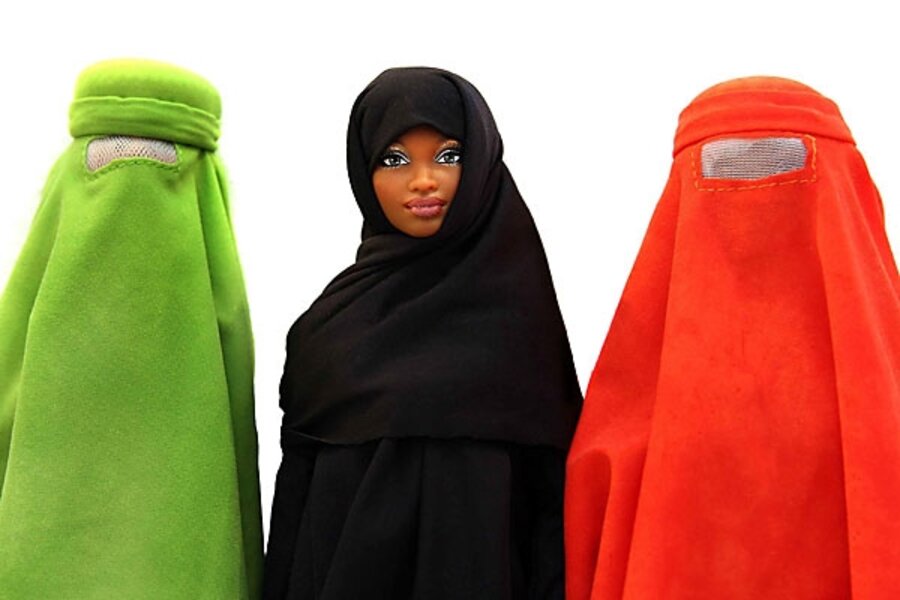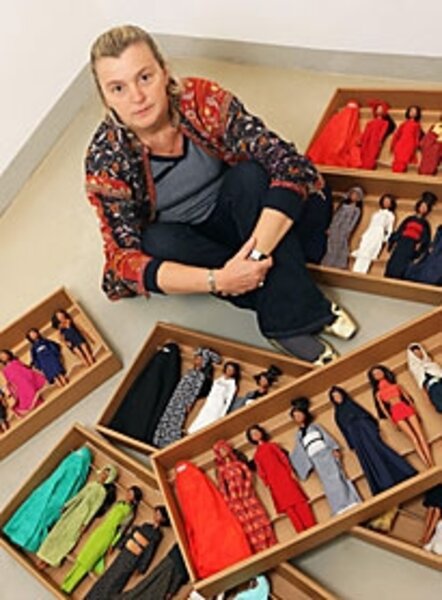Burka Barbie to raise funds for Save the Children
Loading...
Burka Barbie?
In her latest makeover, Barbie is dressed in a stylish vermilion head-to-toe burka with a mesh peep hole. She also shows off a similar lime burqa, as well as slightly less confining, traditional black hijab.
The latest from Mattel?
Well, sort of. It’s part of a 500-Barbie doll collection unveiled, as it were, Friday in Florence, Italy. The exhibition of international outfits modeled by the most famous anatomically incorrect doll, dressed by Italian designer Eliana Lorena, is going to be auctioned by Sotheby’s to raise funds for Save The Children.
The exhibition – and sale – are part of the 50th birthday “celebrations” of the doll that American Ruth Handler created in 1959.
But a “Muslim” Barbie is not a new idea. In fact, should Mattel decide to mass produce a Burka Barbie, she'll have some competition.
Saudi Arabia outlawed Barbie in 2003, saying that the doll’s “revealing clothes and shameful postures, accessories, and tools are a symbol of decadence to the perverted West.”
More recently, in April 2008, Iranian prosecutor Ghorban Ali Dori Najafabadi warned in that Barbie dolls are “destructive culturally and a social danger.” He also singled out Batman, Spiderman, and Harry Potter toys as “putting at risk ... our children.”
This threat of Western cultural invasion via dolls evokes sporadic warnings and crackdowns in Iran. Back in 2002, Iran tried to counter the popularity of Barbie with the introduction of Sara and Dara dolls. Their launch was accompanied by a crackdown by Iran’s morality police on the sale of Barbies in Tehran. But Sara and Dara didn’t sell well.
In 2003, a United Arab Emirates company, NewBoy, introduced Fulla, a dark eyed, more realistically proportioned doll with “Muslim values.”
Unlike Sara and Dara, Fulla found a market quickly. Within two years, 1.5 million Fulla dolls were sold across the Middle East. Since then, the Indonesian Muslim doll, Arrosa, has also sold well.
-----------------------------






